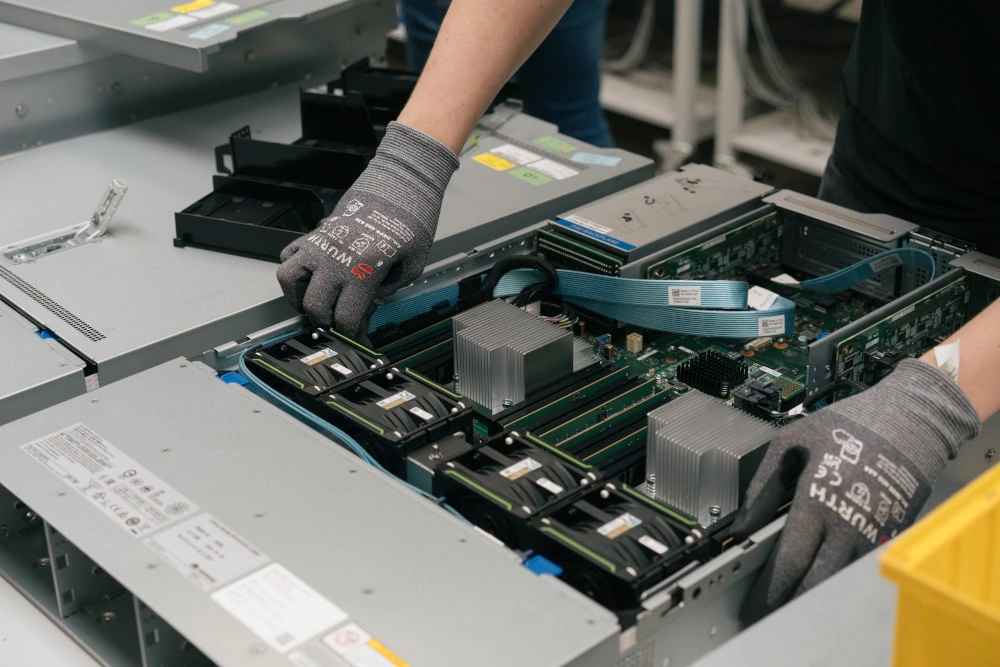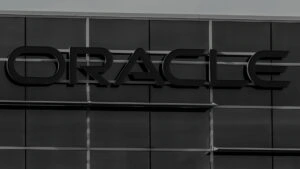The holistic planning of an IT infrastructure is complex. It is not only important to carry out a comprehensive inventory and requirements analysis.
The responsible handling of used IT hardware should also be considered from the outset from an economic and ecological perspective.
For many companies, the necessary adaptation of the IT infrastructure is one of the main challenges when implementing artificial intelligence. This is the result of a recent study by the TCS Thought Leadership Institute, for which almost 1,300 CEOs and managers from twelve industries in 24 different countries were surveyed. According to the study, many companies must first adapt their hardware, software and data systems in order to meet the high computing requirements of AI.
But it is not only in the context of AI that a high-performance IT infrastructure plays an important role in companies. The infrastructure also creates the basic prerequisites for operational efficiency and productivity, security and protection against cyber attacks as well as the scalability of internal and external services. It is also important for companies to be able to react quickly to market changes with the help of a flexible IT infrastructure. This is why many companies are relocating at least parts of their infrastructure to the cloud.
Comprehensive inventory and needs analysis
Groundbreaking decisions are already made during the conception of an IT infrastructure. The entire planning process is correspondingly demanding. There is no single standard that ensures that companies have a good IT infrastructure. What is needed is a multi-stage process. The first step is to carry out a comprehensive analysis of a company’s current situation and requirements. Although many companies have an IT infrastructure, it may not yet be fit enough for the digital transformation and needs to be expanded. Other companies are still at the very beginning of this development.
It is also important to clarify which business objectives the company is pursuing and what this means for the IT infrastructure. Ideally, company growth, planned expansions or new structures should be anticipated at the planning stage. The next step is to select the appropriate technology – i.e. the hardware and software. This includes, for example, servers, networks, storage solutions, operating systems and applications.
From existing know-how and technologies already in use to industry-specific requirements and regulatory specifications through to corporate objectives, the requirements for each individual company are completely different. Manufacturer-independent advice and the experience of established product providers are therefore indispensable.
Cloud computing vs. on-premises
Alongside the product selection, the question of whether a company wants to rely on cloud computing or on-premises must of course also be answered. Each model has its own pros and cons, which is why the decision here should be weighed up carefully and in line with the business model. The answer here is often not “either or”, but “both” in order to combine the respective advantages.
Another important step is ensuring cybersecurity. What measures need to be established here to protect the IT infrastructure from unwanted access in the best possible way? The options range from access controls and data encryption to the implementation of firewalls and other security measures. Network design is also part of planning an IT infrastructure. After all, it must be ensured that the necessary bandwidth is available in a company in the first place so that there are no failures when linking different departments.
As with any well thought-out project in a company, IT infrastructure also requires sound project management. This should include a concrete schedule for planning and implementation as well as detailed budgeting. Depending on the complexity of the IT infrastructure, the project does not end with the installation. Some employees also need to be trained in how to use the new infrastructure. This costs time and therefore human and financial resources.
Energy-efficient and resource-saving technologies
With this in mind, it is important to comprehensively prepare and plan the commissioning of a new IT infrastructure. This benefits a company in the long term, which is also evident when it comes to sustainability. The IT infrastructure can be an important lever for companies to become greener in general. This is possible, for example, with the targeted selection of the required technology. Many network providers now develop and design their technologies in such a way that they are as energy-efficient as possible and have a long product life cycle.
It is also worth taking a closer look at the software used, which varies greatly depending on how resources are conserved. Optimized software algorithms can make a decisive contribution to reducing energy consumption. Another aspect that can significantly improve the sustainability balance of an IT infrastructure project is the responsible handling of used hardware.
Extending the product life cycle through refurbishment
Let’s assume that a company is expanding its existing IT infrastructure and, for example, the servers and even the entire computer are being replaced. Unfortunately, many companies are still under the misconception that data cannot be deleted in an audit-proof manner. But this is simply wrong.

In the course of a standardized and ISO-certified refurbishment, the computers can very well be refurbished in such a way that the data carriers can continue to be used without any security concerns. This extends the product life cycle of IT assets many times over and is therefore more environmentally friendly than recycling. So if a company also wants to design its IT infrastructure with sustainability in mind, the responsible handling of used IT hardware is at least as important.







